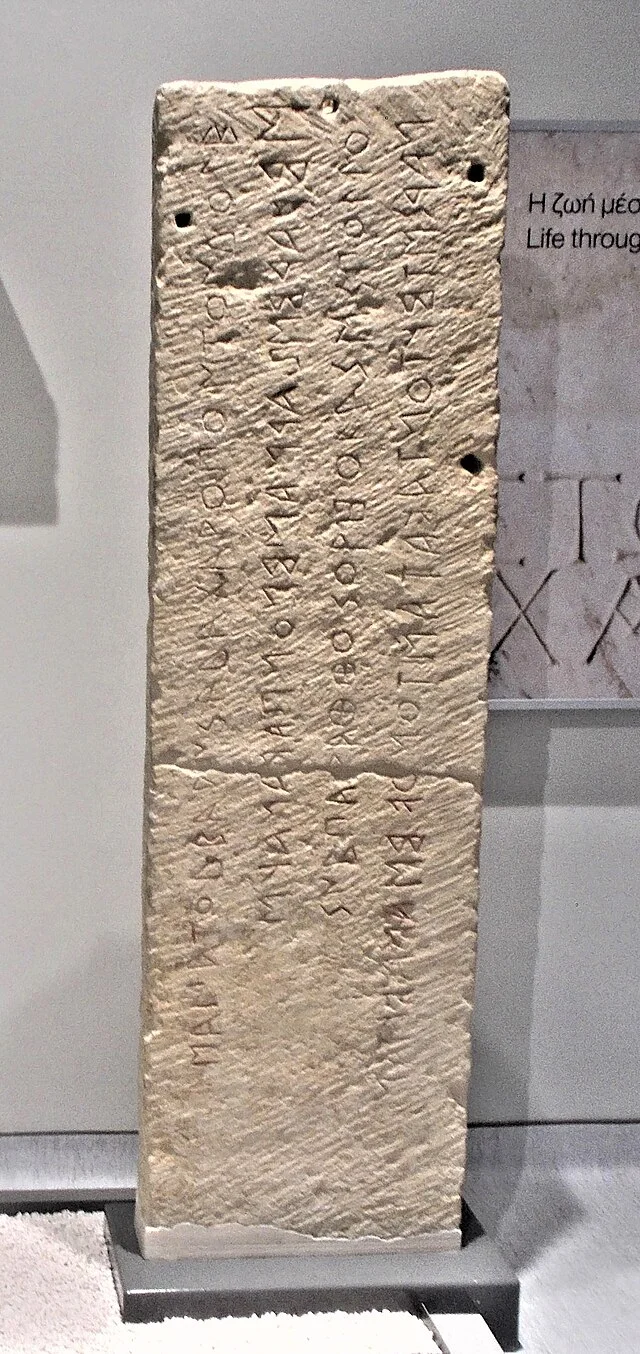The Stele of Arniadas is an ancient funerary monument found in the region of Lycia, located in what is now modern-day Turkey. Dating back to the 5th century BC, this stele is significant for its historical and linguistic contributions to the understanding of Lycian culture and script.
Get your dose of History via Email
Historical Background

Lycia was a unique and powerful region during the 1st millennium BC. Known for its strategic position along Mediterranean trade routes, Lycia was culturally and politically distinct from other regions of Anatolia. The Lycians maintained their own language, governance, and customs, which were reflected in their art and architecture.
The Stele of Arniadas provides a glimpse into Lycian funerary practices. It served as a marker for the grave of an individual named Arniadas, a figure of some standing in Lycian society. The stele’s inscription is an important artifact for the study of the Lycian language, one of the Anatolian languages that used an alphabet derived from Greek.
Inscription and Language
The inscription on the Stele of Arniadas is written in Lycian script, a unique adaptation of the Greek alphabet used by the Lycians. Linguists and historians have studied this inscription to learn more about the Lycian language, which was once widely spoken in the region. The text itself provides details about Arniadas, his family, and the circumstances of his burial.
The Lycian script is a valuable tool for understanding the cultural exchanges between Lycia and the Greek world. While the Lycians adopted the Greek alphabet, they maintained a distinct language, which sets them apart from other ancient cultures in the region.
Archaeological Significance
The Stele of Arniadas is an important archaeological find, as it represents the blending of Lycian and Greek influences in the 5th century BC. The design of the stele, including its shape and carvings, is similar to other Greek funerary steles of the same period, but the Lycian inscription and stylistic elements reflect local traditions.
This monument highlights the cultural integration of Lycia within the larger Mediterranean world while maintaining its unique identity. The stele’s discovery also offers clues about the burial practices of Lycian elites, as only important individuals would have such elaborate monuments.
Importance to Lycian Studies
The Stele of Arniadas is more than just a funerary marker. It plays a crucial role in the study of Lycian language and society. Since few Lycian inscriptions have been found, each one is critical for piecing together the linguistic puzzle of the region.
Researchers use the stele to compare Lycian with other Anatolian languages, such as Luwian and Hittite. The stele also helps historians understand the complex interactions between the Lycians and their Greek and Persian neighbors during the Achaemenid Empire’s control over Anatolia.
Conclusion
The Stele of Arniadas stands as a testament to the rich cultural and linguistic history of Lycia in the 5th century BC. Through its inscription, historians and linguists continue to unlock the mysteries of the Lycian language and its role in the ancient world. The stele also represents the blending of local traditions with external influences, a hallmark of the region’s history. This artifact remains a key piece in understanding the broader cultural exchanges of the ancient Mediterranean.
Source:

